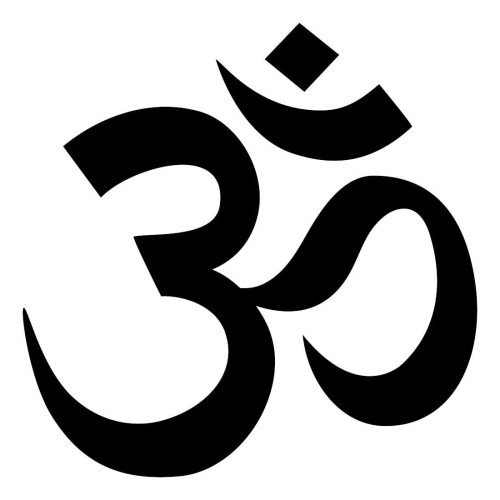Many moons ago, when I tried yoga for the first time as a teenager in Argentina, I remember feeling a little weird as I was invited to chant the OM sound at the beginning and closure of class. Have you ever felt that way? Do you recall a sense of unease or not belonging because of chanting OM in class? Were you ever scared of being converted into a new religion? If you answered yes to any of these questions, you are not alone.
We know that the foundation of yoga is spiritual, and the practice aims to connect us with our higher Self, Spirit, or God. However, yoga is not a religion, and there are no philosophical texts defining any one God. Instead, it’s a path for us to feel whole and alive, in whatever form that takes for each of us. Sutra 1.27 says, “The sacred word representing Isvara [the highest divine being] is OM.”
OM, pronounced AUM /awm/, is a sacred sound generally known as the sound of the universe. It unifies everything in the world. The vibrations that the OM sound creates are believed to energize the chakras throughout the body, especially the ones that connect us with our divine Self (such as the third eye and crown chakras).
The OM symbol represents the sound in a visual form and has a lot of meaning behind it. It’s one of the most important spiritual symbols found in ancient Hindu texts, prayers, and ceremonies. The symbol is a combination of curves, a crescent, and a dot. Phonetically speaking, they represent three states of consciousness. The letter “A” refers to the waking state; “U” the dream state; and “M” the unconscious state, also called deep sleep. Between chants, there’s a space of silence which represents the fourth state of being called turiya, or absolute state.
In most texts, the meaning of OM is regarded as inexhaustible, infinite language and knowledge, and the essence of everything that exists and of life itself. Meanwhile, in today’s world, the meaning of OM is a symbol of peace, tranquility, and unity. It reminds us to slow down and breathe. It is an invitation to listen to our own voice and connect deeply to the vibrations coming from within ourselves. These vibrations are calming to the mind and the central nervous system.
When chanted in class, OM also signifies unity, bringing a sense of community to the group. Chanting is believed to help align the body, mind, and soul, and that may be a reason why people feel more connected with themselves after meditating and practicing the chant. Sparing some time to chant and ease the mind can be very helpful and beneficial to our health. Additional benefits include:
- reducing stress levels
- improving concentration
- regulating sleep cycles
- letting go of negativity
- feeling energized and invigorated
There’s a lot behind the OM sound and symbol, yet none of it is about turning you towards a weird cult or feeling forced to chant it. If you are skeptical, or need extra time easing into voicing OM, you can reap the benefits by listening to it in class or find beautiful and varied versions of the chant in music, apps, meditation websites, etc.
Happy OMing!
For further reading, check out these books:














